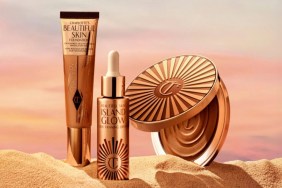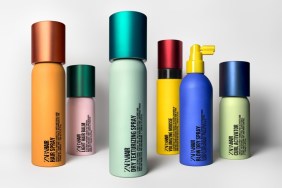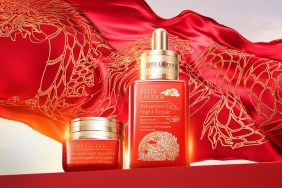You don’t need us to tell you that the Korean skin care craze is major. You just need to take a look at any department store counter or drugstore aisle. Even Western beauty brands are being inspired by K-beauty and developing their own ranges based off of its principles.
If you’re curious about Korean beauty and have begun researching it, you’ll know that there’s a lot more to a traditional Korean skin care regimen than your usual routine — about 10 steps more. There are many products — like milk peels, essences and ampoules — that don’t fit into your typical cleanse, tone and moisturize routine.
If you’re feeling overwhelmed by all the Korean skin care options or you’ve tried products but aren’t sure whether you’re really doing the routine right, we asked experts for tips on avoiding the most common mistakes and how to get the most out of your products.
Not Cleansing Thoroughly
Charlotte Cho, co-founder of popular Korean beauty site Soko Glam and editor-in-chief of The Klog, says that the biggest mistake people make is failing to realize how essential cleansing is. That doesn’t simply mean rubbing your face with a cleansing wipe and calling it a day. It usually means double cleansing. Cho explains, “With all the dirt and impurities in the air, it is so important to make sure your skin is being cleansed, not only from dirt in the air, but also the oil that skin produces throughout the day.”
“An oil-based cleanser is needed to take away all of that extra sebum, makeup and SPF that a water-based cleanser is not capable of removing since water and oil don’t mix. A water-based cleanser in foam or cream form, like the Neogen Green Tea Real Fresh Foam Cleanser ($19), will gently draw out sweat and dirt,” she says.
Misinterpreting K-beauty Terms
The more you start looking into K-beauty, the more new terms you will come across. It’s easy to feel overwhelmed, but don’t let that stop you. If you’re thinking about buying new products, it’s important that you get what those terms mean. Take one new term at a time and learn it. It will help you shop smarter.
Jessica Jeong, MISSHA‘s marketing and PR coordinator, points out that “brightening” and “whitening” often lead to some confusion because they’re not the same thing. “Products labeled ‘whitening’ only target hyperpigmentation and dulling skin tone,” she explains. Furthermore, “whitening” products aren’t necessarily about bleaching your skin. “I can’t speak for other brands, but MISSHA’s ‘whitening’ products do not include any potentially dangerous bleaching agents. Therefore, anyone can benefit from so-called ‘whitening’ products, no matter what their skin tone.”
Rubbing Instead of Tapping
Are you scooping up your creams, then rubbing them over your face? If so, you need to stop. Your complexion is sensitive and all that rubbing isn’t doing your face or your products any favors. Cho suggests tapping your products into the skin. Being gentle is key.
Not Following the Grain of Your Skin
There’s more to grains than steaks and wood. Jeong explains that following “the grain of your skin” is a popular application method for many products. What it simply means is that when you’re applying a product, you start from the innermost part of your face and work outward and upward. For example, you start at your nose and go out toward your temple. Then you work from your forehead to your temples. “This process is meant to give your skin a little boost in reducing lymphatic swelling and fighting the downward pull of gravity… Many of the women I have encountered during my life as a beauty enthusiast swear by it,” she says.
Too Much Too Soon
While you may be tempted to get right into the 10-step Korean beauty routine by completely switching things up, it’s actually not the best idea for your skin — or your wallet. Jeong suggests replacing products in your current regimen with K-beauty equivalents, then adding in other steps that seem relevant to you, such as an essence or ampoule.
Cho adds, “An important tip is to introduce one product at a time and slowly build a skin care regimen based on products that react and work well with your skin.” She suggests getting a starter kit like the Soko Glam Quick Starter Skincare Set ($62) and gradually incorporating each product.
Applying Products in the Wrong Order
You can have all of the right products, but they won’t reach their optimal potential if you’re using them in the wrong order. Cho explains that a good rule of thumb is to apply cosmetics from lightest to heaviest. That way you won’t have a heavier product preventing a lighter one from being absorbed. For example, you use your toner before your serum, followed by your moisturizer.
Focusing Only on Treatment
One of the biggest principles in the Korean beauty world is prevention. Instead of waiting for those pimples or fine lines to appear before you treat them, think about maintaining the health of your skin now. Cho says that being proactive is essential. That means using products like sunscreen before your skin is damaged.
Not Being Consistent
In life, being consistent is the key to doing things well and that applies to your skin care routine, too. That means washing your face on those nights when you can barely lift your arms. It also means giving your products enough time to work. If you’re constantly switching from one thing to another, you’re not giving products ample time to do their job.
Mixing the Wrong Ingredients
You’ve probably discovered that mixing perfume doesn’t always produce the best results and it’s the same with skin care. Cho cautions that you don’t want to mix vitamin C with alpha hydroxy acids (AHAs) or beta hydroxy acids (BHAs) because they can interact and cause irritation. Remember that when it comes to non-Korean beauty products, too.
Improper Storage
Most places that are good for Instagram flat lays aren’t ideal for storing your skin care products. Cho explains that it’s best to store your products in cool areas where they will not be exposed to direct sunlight. That means no shower stalls or sunny vanities. Direct sunlight exposure causes products to fluctuate in temperature, which can reduce their potency. Cho cautions that this is especially true with products containing vitamin C, retinol or benzoyl peroxide.
She suggests storing skin care products inside a cabinet, drawer or even a lidded box. You can also keep products containing vitamin C in the fridge. Cho says that this helps keep the vitamins from breaking down or oxygenizing, which can potentially change the formula.








